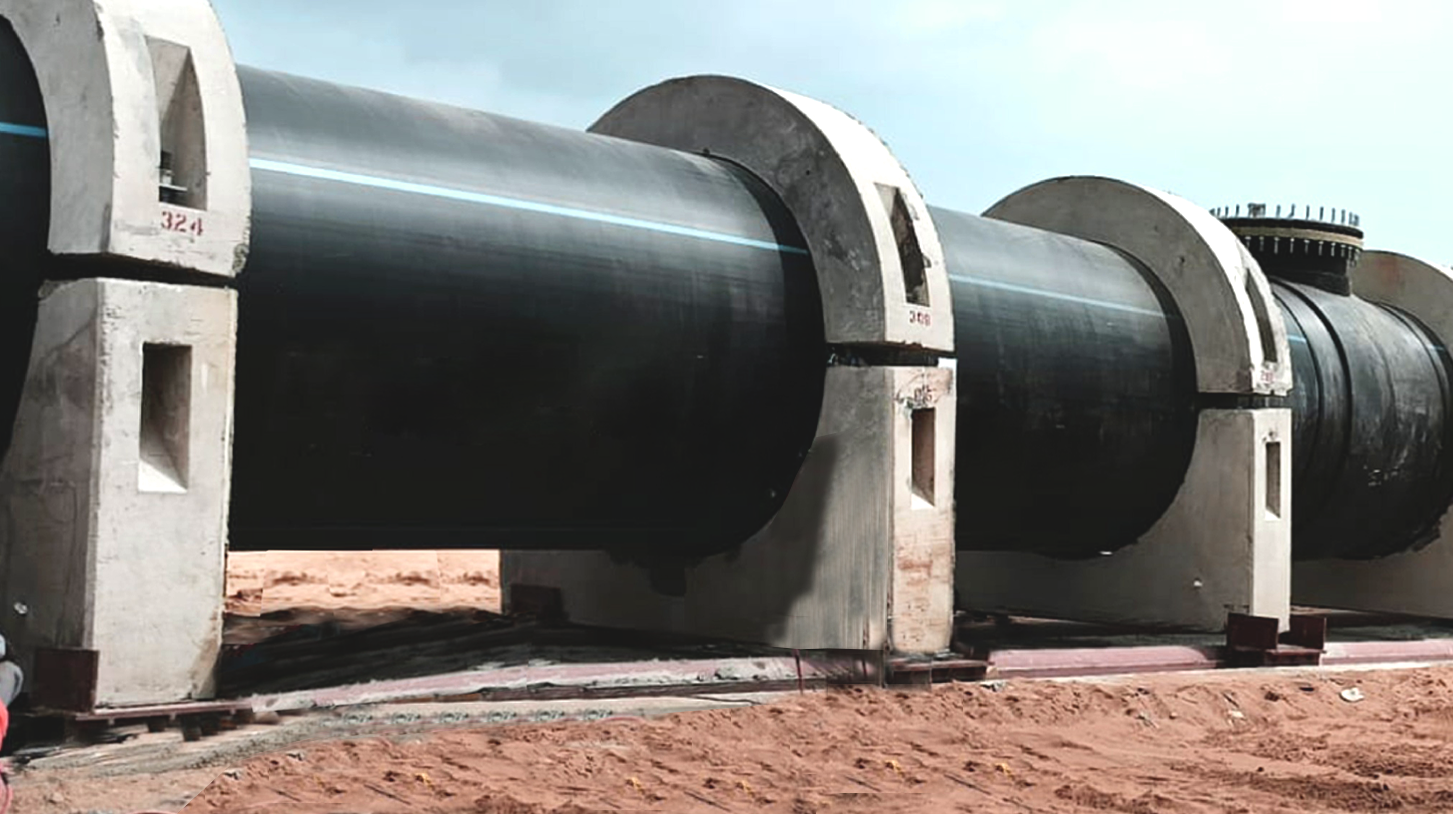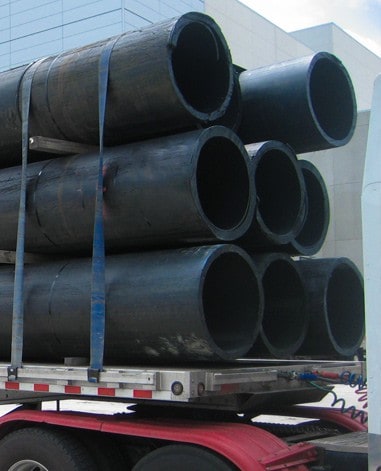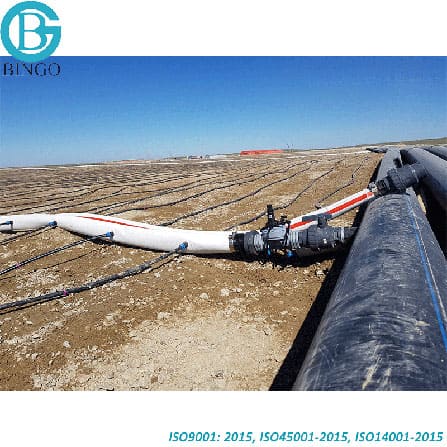How American Plastics HDPE Pipe for Oilfield Supports Oilfield Operations
Wiki Article
Explore the Production Process Behind High-Quality HDPE Pipe and Its Applications
The production procedure of premium HDPE pipelines is complex and methodical. It begins with the option of resources that boost efficiency. Following this, ethylene undertakes polymerization to create material, which is after that shaped through extrusion. Quality assurance is paramount, making certain that the final product fulfills rigorous criteria. Nonetheless, the journey of HDPE pipes does not finish with manufacturing. Their applications throughout various industries disclose a wider relevance worth examining.Recognizing HDPE: Characteristics and Advantages

High-density polyethylene (HDPE) is a functional polycarbonate known for its toughness and resistance to different ecological aspects. This material shows superb tensile stamina, making it suitable for requiring applications. Its low-density framework adds to a light-weight item, assisting in convenience of managing and installment. HDPE also showcases impressive resistance to chemicals, which decreases destruction when subjected to extreme substances.
The material's reduced dampness absorption even more enhances its longevity, making it excellent for usage in pipes and storage space tanks. Additionally, HDPE is immune to ultraviolet (UV) radiation, guaranteeing that items keep their honesty even when subjected to sunshine. Its adaptability permits for the creation of elaborate shapes without jeopardizing stamina. The environment-friendly nature of HDPE, commonly originated from recycled materials, adds to its appeal, promoting sustainable techniques in manufacturing. On the whole, these homes and advantages make HDPE a recommended option for various commercial and customer applications.
Resources Selection for HDPE Production
The option of raw products for HDPE manufacturing is vital to validate the last product satisfies the wanted specs and high quality requirements. High-density polyethylene (HDPE) is mostly created from polymerized ethylene, derived from nonrenewable fuel sources such as natural gas or petroleum. The quality of these feedstocks significantly affects the mechanical and thermal residential properties of the final HDPE.Ingredients likewise play a considerable role in improving HDPE's efficiency, including antioxidants, UV stabilizers, and colorants, which boost durability and resistance to environmental variables. The choice procedure must take into consideration not just the chemical composition of the raw products but also their handling qualities to guarantee efficient manufacturing.
In addition, the sourcing of raw products need to prioritize sustainability and compliance with environmental policies, as accountable practices are imperative in today's market. Inevitably, cautious basic material choice lays the structure for producing high-quality HDPE pipes suitable for varied applications.
The Extrusion Refine: Shaping HDPE Pipeline
The extrusion process plays a crucial function fit HDPE pipes, starting with meticulous product prep work strategies that ensure ideal circulation and uniformity. Similarly important is the layout of the die, which straight influences the final measurements and surface area quality of the pipe. With each other, these factors contribute greatly to the performance and quality of HDPE pipeline manufacturing.Product Preparation Methods
Efficient manufacturing of HDPE pipelines begins with careful material prep work strategies, particularly the extrusion procedure. Throughout this stage, high-density polyethylene material is initial dried to eliminate wetness, guaranteeing optimal circulation characteristics. The resin is after that fed into the extruder, where it undergoes home heating and melting, transforming right into a viscous state. This home heating process is meticulously controlled to keep the product's stability and efficiency. The liquified HDPE is forced via a die, forming it right into a continuous pipe type. Proper temperature administration during extrusion is vital, as it directly impacts the product's residential properties and the final product quality. As soon as formed, the HDPE pipe is cooled down and reduced to defined sizes, prepared for succeeding handling and applications.Die Style Importance
Precision in die layout plays an essential role in the extrusion procedure of HDPE pipelines. The die works as the last shaping device, straight influencing the pipeline's dimensions, wall thickness, and surface finish. A properly designed die guarantees consistent material circulation, minimizing flaws such as abnormalities and weak points. The geometry of the die need to be optimized to fit the specific homes of HDPE, including its viscosity and thermal actions throughout extrusion. Additionally, the cooling price of the material as it passes via the die can significantly affect the pipeline's architectural honesty. Consequently, purchasing advanced die innovation is crucial for producers intending to create premium HDPE pipelines that meet sector requirements and client assumptions.Quality Assurance Steps in HDPE Manufacturing
Although numerous variables influence the top quality of HDPE pipeline production, effective quality control procedures are critical to assure consistency and dependability in the final item. Key quality assurance practices include rigorous product assessment, confirming that the raw polyethylene fulfills established standards for purity and thickness. During the extrusion process, parameters such as temperature, pressure, and cooling time are very closely monitored to maintain dimensional precision and architectural stabilityIn addition, post-production testing is crucial; suppliers often carry out hydrostatic examinations to analyze the pipeline's toughness and resistance to pressure. Aesthetic examinations for surface area flaws further boost high quality assurance. Qualification from relevant standards companies, like ASTM or ISO, gives an additional layer of credibility. By implementing these extensive quality assurance procedures, makers can lessen issues, improve efficiency, and ensure that the HDPE pipelines satisfy the particular demands of numerous applications, eventually bring about consumer complete satisfaction and count on the product.
Applications of HDPE Pipe Across Industries
HDPE pipes are utilized across numerous industries as a result of their durability and adaptability. In water circulation systems, they assure reliable delivery, while in wastewater administration, they supply trusted services for waste transport. Furthermore, agricultural irrigation networks gain from HDPE's resistance to rust and versatility, making it an optimal option for modern farming practices.
Water Circulation Equipments
A considerable variety of industries depend on high-density polyethylene (HDPE) pipelines for reliable pop over here water distribution systems. Understood for their resilience and resistance to rust, HDPE pipes are widely utilized in community water supply networks, farming watering, and commercial applications. Their lightweight nature promotes very easy handling and installation, minimizing labor expenses and time. In addition, HDPE pipelines can fit different pressure levels, making them appropriate for both low and high-pressure systems. Pipe Supplier American Plastics Midland. The versatility of the product permits smooth combination into existing framework, decreasing the requirement for comprehensive excavation. Moreover, HDPE's resistance to chemical leaching guarantees that the water delivered continues to be risk-free and tidy, making it a suitable selection for keeping the high quality of safe and clean water across different fieldsWastewater Management Solutions
Effective water distribution systems additionally lead the method for ingenious wastewater administration solutions, where high-density polyethylene (HDPE) pipes play a significant function. Popular for their resilience and resistance to corrosion, HDPE pipes are ideal for transferring wastewater in various settings. Their adaptability permits for very easy installment in intricate atmospheres, reducing the need for substantial excavation. Additionally, HDPE's smooth indoor surface lowers friction, enhancing flow rates and performance. These pipelines are likewise resistant to chemical leaching, guaranteeing that impurities do not compromise the surrounding environment. Industries, communities, and treatment facilities increasingly depend on HDPE pipes for their reliability and longevity, making them a recommended selection for modern-day wastewater monitoring systems. This flexibility underscores the essential relevance of HDPE pipes throughout countless applications.Agricultural Irrigation Networks
Agricultural watering networks profit greatly from using high-density polyethylene (HDPE) pipes, which give effective and reliable water delivery to plants. HDPE pipelines are light-weight, making them simple to carry and set up, while their versatility enables different configurations in diverse surfaces. These pipes show superb resistance to deterioration, chemicals, and UV radiation, guaranteeing sturdiness in rough agricultural atmospheres. In addition, their smooth indoor surface lessens rubbing loss, optimizing water circulation and minimizing energy costs connected with pumping. The durability of HDPE pipes, usually surpassing 50 years, adds to reduce maintenance and replacement expenditures. Farmers significantly depend on HDPE pipes to boost watering performance and advertise sustainable farming methods, ultimately leading to boosted plant returns and resource conservation.
Future Patterns in HDPE Pipe Innovation
As the need for sustainable and reliable infrastructure expands, innovations in HDPE pipe technology are positioned to change different markets. Arising patterns consist of the combination of wise technologies, such as sensing units and IoT capabilities, which promote real-time tracking of pipeline conditions, minimizing maintenance expenses and preventing leakages. In addition, the development of advanced manufacturing techniques, such as 3D printing, is making it possible for the production of complicated, customized pipe layouts that accommodate particular job needs.In addition, the concentrate on recycling and circular economic climate practices is driving the innovation of HDPE pipelines made from recycled products, boosting sustainability. Improved jointing approaches, such as electro-fusion and mechanical fittings, are likewise improving installation performance and integrity. The growing emphasis on environmental laws is pushing suppliers to adopt greener manufacturing procedures, ensuring that HDPE pipelines not just meet sector requirements however additionally promote an even more lasting future for framework development.
Often Asked Concerns
How Does HDPE Compare to Other Plastic Products?
HDPE outmatches numerous other plastic products regarding longevity, chemical resistance, and flexibility. Its reduced density and high tensile stamina make it excellent for different applications, commonly surpassing alternatives in both performance and durability.What Are the Environmental Impacts of HDPE Production?
The environmental influences of HDPE production consist of greenhouse gas exhausts, energy intake, and potential pollution from producing processes. In addition, improper disposal can cause soil and water contamination, elevating problems concerning long-term ecological results.Can HDPE Water Lines Be Recycled?
Yes, HDPE pipes can be recycled. Several facilities approve utilized HDPE for handling, changing it into brand-new products. This reusing adds to sustainability efforts, reducing plastic waste while saving resources and power in the production cycle.What Is the Lifespan of HDPE Pipes?

Just How Do Temperature Level Variants Impact HDPE Pipeline Efficiency?
gas pipeline installation Temperature variants substantially influence HDPE pipeline efficiency, influencing adaptability and stamina. Heats can result in softening, while reduced temperature levels may create brittleness, inevitably affecting the pipeline's longevity and suitability for various applications in varied atmospheres.Report this wiki page